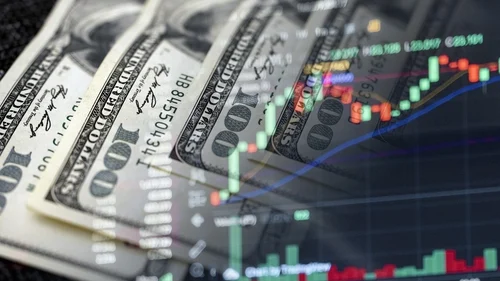
The US economy grew more in the third quarter
In the third quarter, the U.S. economy expanded more quickly than anticipated because to strong consumer spending.
In its third estimate of third-quarter GDP released Thursday, the Commerce Department’s Bureau of Economic Analysis reported an upwardly revised 3.1% annualized growth rate for the gross domestic product. According to earlier reports, the GDP grew by 2.8% over the preceding quarter.
Reuters polled economists who predicted that GDP would remain unchanged. A downward revision to private inventory investment and an upward revision to imports were counterbalanced by improvements in consumer spending and export growth.
In the April–June quarter, the economy expanded at a rate of 3.0%. It is growing at a rate that is significantly faster than the 1.8% non-inflationary growth rate that is considered by the Fed.
Despite cutting interest rates for the third time in a row on Wednesday, the U.S. central bank only anticipated two rate cuts in 2019 as opposed to the four it had predicted in September, noting the economy’s ongoing resiliency and high inflation.
The policies of the incoming Trump administration, such as tax cuts, mass deportations of undocumented immigrants, and tariffs on imported goods, have also raised fears about the possibility of inflation.
The policy rate was lowered by 25 basis points to fall between 4.25% and 4.50%. To control inflation, it was raised by 5.25 percentage points between March 2022 and July 2023.
“It’s pretty clear we’ve avoided a recession,” remarked Fed Chair Jerome Powell to reporters on Wednesday, adding that “the U.S. economy has just been remarkable, I feel very good about where the economy is… and we want to keep that going.”
Over two-thirds of economic activity is derived from consumer spending, which increased at a rate of 3.7%. The 3.5% rate that was earlier predicted was raised.
Excluding government spending, trade, and inventories, a measure of domestic demand grew at a rate of 3.4%. It was previously predicted that final sales to private domestic buyers increased at a rate of 3.2%. In the second quarter, domestic demand grew by 2.7%.
Without capital consumption and inventory valuation adjustments, national after-tax earnings fell by $15.0 billion, or 0.4%. Previously, they were predicted to have increased by $0.2 billion, or remained constant as a percentage.
In terms of income, the economy grew at a 2.1% rate last quarter, which was less than the 2.2% pace that was first projected. The second quarter saw a 2.0% increase in gross domestic income (GDI).
Although GDP and GDI should be equal in theory, they are not in reality since they are calculated using data from several, mostly independent sources. The difference between GDP and GDI has significantly decreased as a result of annual benchmark revisions.
A 2.6% increase was seen in the average of GDP and GDI, also known as gross domestic output, which is seen to be a more accurate indicator of economic activity. Compared to the 2.5% rate announced last month, that was increased. The April–June quarter had a 2.5% growth in gross domestic production.
All Categories
Recent Posts
Tags
+13162306000
zoneyetu@yahoo.com



